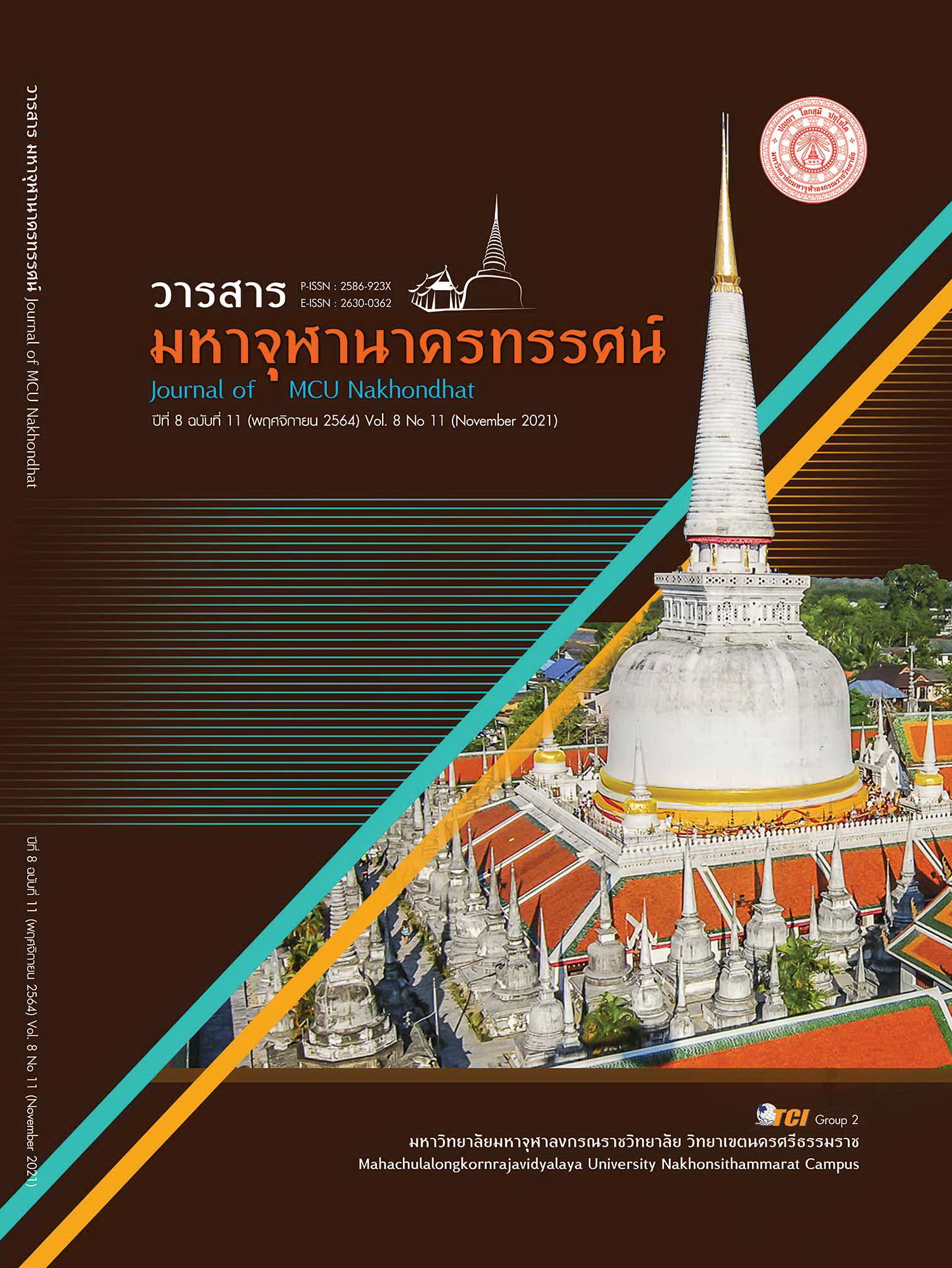FARMER’S QUALITY OF LIFE WITH SUSTAINABLE AGRICULTURE DEVELOPMENT MODEL
Main Article Content
Abstract
This research Its objectives are 1) to study the quality of life of farmers in Ban Na Sub-district, Ban Na District, Nakhon Nayok Province. 2) to study the model of quality-of-life development through sustainable agriculture of farmers in Ban Na Sub-district, Ban Na District, Nakhon Nayok Province and 3) to drive and evaluate the use of sustainable agriculture development model for farmers in Ban Na Sub-district, Ban Na District, Nakhon Nayok Province. It is a mixed research method with the quantitative research sample consisted of 237 households. The key informants of the qualitative research were agriculture, agriculture, Ban Na district, community development and every village headman, total 14 persons. The quantitative research instruments were questionnaires, interview form and focus group. Quantitative data analysis using statistics, percentage, mean and standard deviation. The results of the research revealed that 1) Quality of life of farmers in Ban Na Subdistrict, Ban Na District, Nakhon Nayok Province, before the model drive ( = 3.65) and after the model was driven (
= 3.99) 2) Development model of quality of life through sustainable agriculture of farmers in Ban Na Sub-district, Ban Na District, Nakhon Nayok Province, before the model drive (
= 3.28) and after the model was driven (
= 3.93) and 3) Driving and evaluating the use of the quality of life development model through sustainable agriculture for farmers in Ban Na Sub-district, Ban Na District, Nakhon Nayok Province. There are powered by publishing through brochures, video media, websites and group meetings to educate farmers. The qualitative assessment was a meeting of community leaders and farmer’s leaders. The result of the driving model is that farmers have a better quality of life, get information, the private sector came to support. There were contacts to visit the model agriculture center and come to learn the way of farmers.
Article Details
References
กลุ่มงานยุทธศาสตร์และข้อมูลเพื่อการพัฒนาจังหวัด. (2563). แผนยุทธศาสตร์ จังหวัดนครนายก. นครนายก: กลุ่มงานยุทธศาสตร์และข้อมูลเพื่อการพัฒนาจังหวัด สำนักงานจังหวัดนครนายก.
พระพรหมคุณาภรณ์, (ป.อ.ปยุตฺโต). (2552). การศึกษาทั่วไปเพื่อพัฒนามนุษย์. (ครั้งที่ 1). กรุงเทพมหานคร: โรงพิมพ์ศูนย์บริหารจัดการศึกษามหาวิทยาลัยศรีนครินทร์วิโรฒ.
มิ่งสรรพ์ ขาวสอาด และคณะ. (2542). รายงานการวิจัยเรื่องการศึกษาเพื่อกำหนดทิศทางการวิจัยในการแก้ไขปัญหาเร่งด่วนด้านทรัพยากรธรรมชาติและสิ่งแวดล้อม : ศึกษากรณีหลักเกณฑ์และเครื่องชี้วัด. เชียงใหม่: สถาบันวิจัยสังคม มหาวิทยาลัยเชียงใหม่.
วรัญญู เวียงอำพล. (2546). การจัดการการท่องเที่ยวแบบยั่งยืนในประเทศไทย. กรุงเทพมหานคร: สำนักพัฒนาบัณฑิตศึกษา สถาบันบัณฑิตพัฒนบริหารศาสตร์.
สำนักงานสถิติแห่งชาติ. (2561). สำรวจคุณภาพชีวิตของประชาชนอย่างยั่งยืน ตามหลักเศรษฐกิจพอเพียง พ.ศ. 2561. กรุงเทพมหานคร: สำนักงานสถิติแห่งชาติ กระทรวงดิจิทัลเพื่อเศรษฐกิจและสังคม.
สำนักงานสภาพัฒนาการเศรษฐกิจและสังคมแห่งชาติ. (2563). แผนพัฒนาเศรษฐกิจและสังคมแห่งชาติ ฉบับที่ 12. กรุงเทพมหานคร: สำนักงานสภาพัฒนาการเศรษฐกิจและสังคมแห่งชาติ.
Dijkers, M. P. J. M. (2005). Quality of life of individuals with spinal cord injury: a review of conceptualization, measurement, and research findings. Journal of rehabilitation research and development, 42(3), 87-100.
Krahn, G. L. et al. (2014). Development and psychometric assessment of the function-neutral health-related quality of life measure. American journal of physical medicine & rehabilitation, 93(1), 56-74.
World Health Organization. (2020). Measuring Quality of Life. (online). Retrieved April 14, 2020, from http://www.who.int/healthinfo/survey/whoqol-qualityoflife/en/


